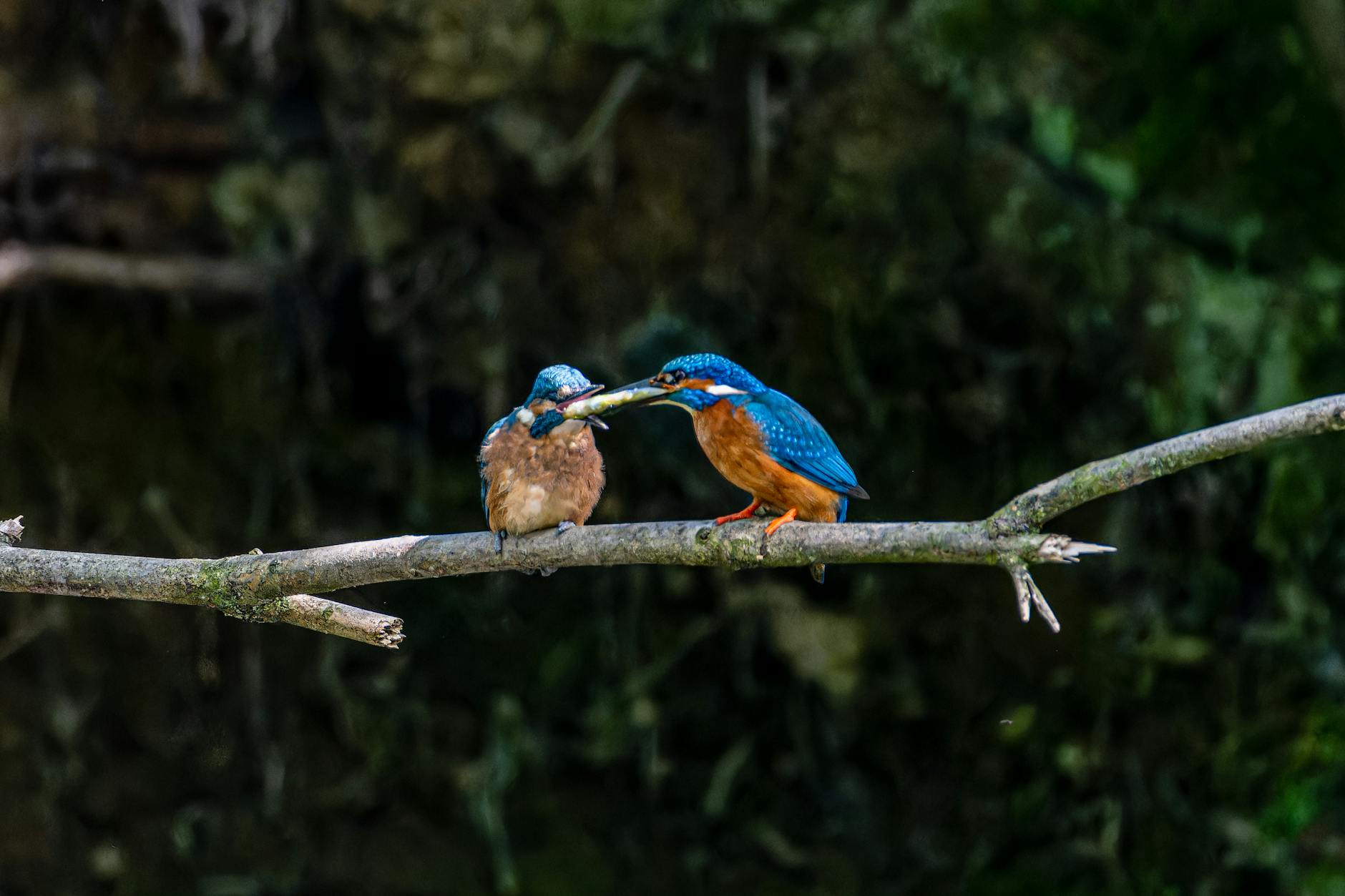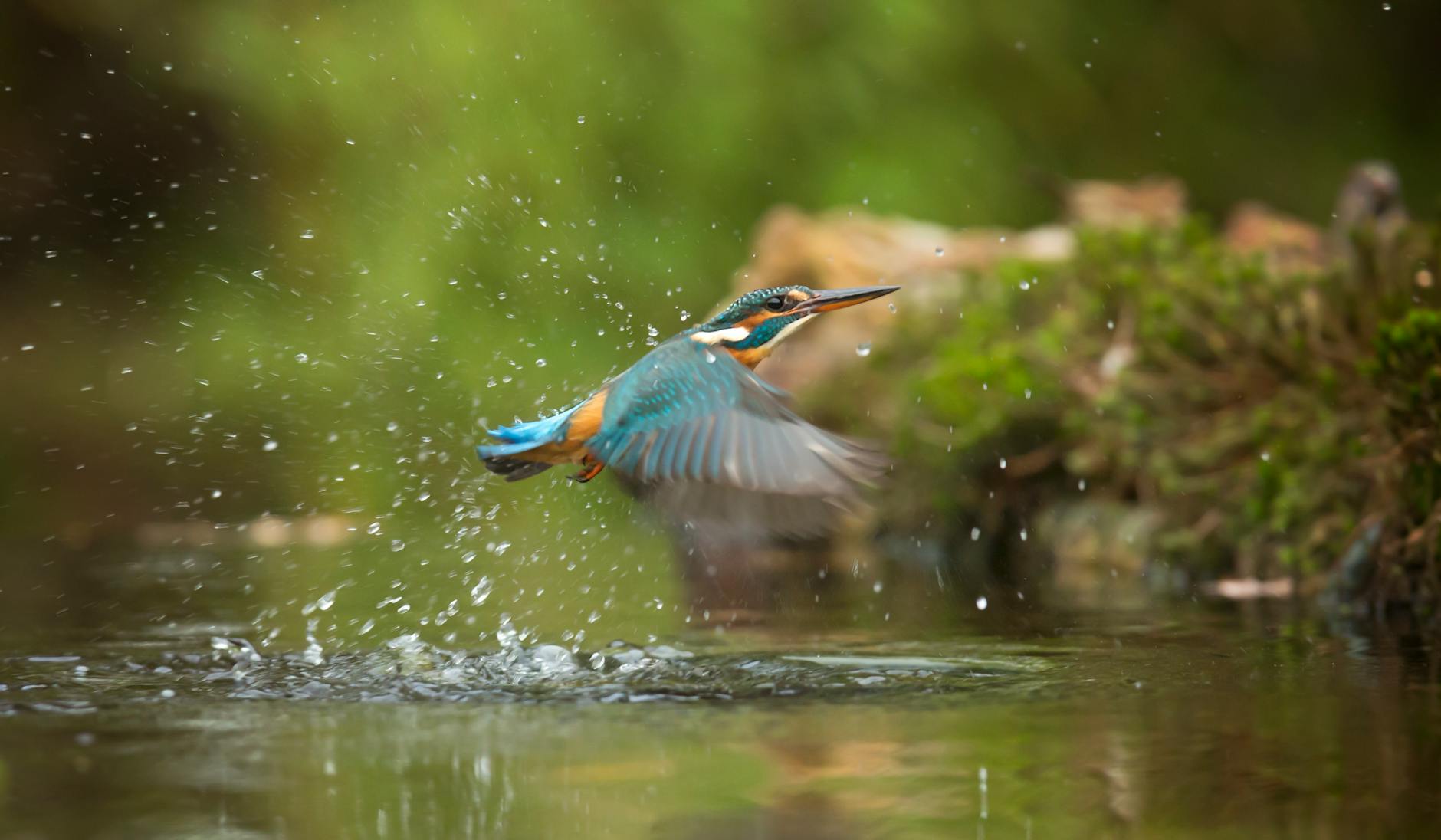How to Spot Kingfishers: Essential Tips for Birdwatchers
Kingfishers are among the most striking birds you can spot in the wild, with their dazzling colours and swift movements. If you’ve ever been captivated by their beauty, you’re not alone. Many birdwatchers yearn to catch a glimpse of these elusive creatures in their natural habitats.
In this post, you’ll find practical tips to enhance your kingfisher spotting skills. From identifying their favourite perches to understanding their feeding behaviours, these insights are designed to make your birdwatching experience more rewarding. Whether you’re a seasoned birder or just starting out, you’ll discover essential strategies to locate these magnificent birds. Get ready to sharpen your focus and increase your chances of witnessing their vibrant display.
Understanding Kingfishers
Kingfishers are truly fascinating birds known for their radiant plumage and acrobatic fishing skills. In the UK, birdwatchers often seek out these vibrant flyers as they flit near water bodies. With several species to observe, knowing what to look for can make your birdwatching experience even more rewarding.
Species of Kingfishers to Spot
When it comes to kingfishers in the UK, two species stand out: the Common Kingfisher and the Belted Kingfisher.
- Common Kingfisher (Alcedo atthis): This is the most widespread kingfisher in the UK. It’s easily recognised by its striking blue and orange feathers and a long, sharp beak. The males are vibrant, while females have a distinct orange underpart that makes them unique. You can spot them near rivers, lakes, or streams where they catch fish.
- Belted Kingfisher (Megaceryle alcyon): Less common in the UK, the Belted Kingfisher is identifiable by its shaggy crest and more robust body. Males are grey-blue with a white collar, and females have a rusty belt across their bellies. They prefer nesting in burrows along the banks of lakes and rivers and can often be seen diving into the water for prey.
For more detailed information on these species, check out the BTO’s Kingfisher page.

Photo by Siegfried Poepperl
Habitat and Behaviour
Kingfishers thrive in a variety of aquatic environments. You can find them near rivers, lakes, wetlands, and marshes. They prefer areas with plenty of vegetation and clear water, as these conditions provide excellent hunting grounds.
Their hunting behaviour is quite remarkable. Kingfishers are known for their swift dives and can be seen hovering over water before plunging to catch fish. They primarily feed on small fish, aquatic insects, and sometimes crustaceans. When nesting, these birds typically excavate tunnels in riverbanks or riverbanks’ edges, which offer shelter and safety for their young.
Observing their unique feeding and nesting behaviours requires patience, but it’s an experience that adds depth to your birdwatching adventures. For further details about kingfisher habitats and behaviours, visit All About Birds’ Belted Kingfisher page.
Best Locations for Birdwatching
Finding kingfishers in the wild can be a rewarding experience, especially when you know where to look. Certain environments are particularly appealing to these colourful birds, making your chances of spotting them much higher. Here are some prime locations to consider for birdwatching, specifically to catch a glimpse of kingfishers.
Rivers and Streams
Rivers and streams offer a unique setting for spotting kingfishers. The clarity of water and surrounding vegetation play a crucial role in attracting these birds. Locations such as the River Thames and River Wye have proven to be excellent for kingfisher sightings. These rivers have clear water and lush banks, providing both food and shelter for the birds.
A few key features to look out for include:
- Flowing Water: Kingfishers prefer areas where the water flows slowly, making it easier for them to spot prey.
- Dense Vegetation: Look for spots with overhanging branches or reeds, as these serve as perches for the birds while they hunt.
- Clean Environments: Pollution and debris can deter kingfishers. Choose rivers known for their cleanliness, like the River Teign, where the ecosystem thrives.
For additional insight on where to witness these beautiful birds along UK rivers, visit Wildlife Trusts’ page on Kingfisher sightings.
Ponds and Lakes
Ponds and lakes are also prime locations to view kingfishers. These water bodies offer abundant fish populations, which are essential for attracting kingfishers. Popular spots include Rutland Water and the serene waters of Loch Garten.
Key considerations for finding kingfishers in these environments include:
- Fish Populations: High numbers of small fish in a pond or lake will entice kingfishers to the area. Sites with clear, still water are ideal.
- Natural Cover: Look for locations with reed beds and overhanging trees. This cover allows kingfishers to swoop down for a meal without being easily detected.
- Accessibility: Ensure you can get close without disturbing the habitat. Quiet observation is key to spotting these birds at play.
For more tips on the best birdwatching locations, check out The UK’s Best Bird Watching Spots.
Coastal Areas
Coastal locations provide another fantastic opportunity to spot kingfishers. Estuaries and tidal rivers, such as those found in the Norfolk coastline, are particularly fruitful. These areas feature brackish waters where fresh and saltwater mix, creating rich feeding grounds for kingfishers.
When scanning coastal regions, keep these tips in mind:
- Estuaries: Look for kingfishers by the banks of tidal rivers, where they can perch and dive for fish.
- Wildlife Reserves: Many coastal reserves, like RSPB Minsmere, offer designated areas where kingfishers are frequently observed.
- Time of Day: Early mornings or late afternoons are often the most successful times for birdwatchers, as kingfishers are particularly active during these hours.
To discover the best spots for observing kingfishers along coastal areas, visit RSPB’s Kingfisher Bird Facts.

Photo by Wijs (Wise)
Tips for Spotting Kingfishers
Finding kingfishers isn’t just about luck; it’s also about using the right techniques and being in the right places at the right times. Here are some tips to enhance your chances of observing these spectacular birds.
Patience and Stealth
To spot a kingfisher, patience and stealth are crucial. These birds are easily startled, so being quiet is essential. Here are some effective camouflage techniques to consider:
- Stay Still: Find a comfortable spot and remain motionless. Sudden movements can scare the birds away.
- Wear Neutral Colours: Dress in muted tones like greens or browns. Bright colours can attract unwanted attention.
- Use Natural Cover: Position yourself behind bushes or trees. This will help conceal your presence while giving you a good view.
If you want to delve deeper into effective techniques, consider exploring more on how to blend into your environment.
Timing Your Visits
Choosing the right time for your kingfisher expedition can significantly affect your success rate. Bird activity tends to peak during specific hours:
- Early Mornings: From dawn until around 10 AM, kingfishers are usually very active as they hunt for breakfast.
- Late Afternoons: As the day cools down, especially before sunset, these birds become lively once again.
Consider checking the best times to go birdwatching in more detail at places like Birdwatchers General Store.
Equipment Recommendations
Having the right gear can make a world of difference when spotting kingfishers. Here’s what you might consider bringing along:
- Binoculars: A good pair, preferably 8×42 or 10×42, will help you see details from a distance.
- Camera with a Zoom Lens: If you want to capture the perfect shot, opt for a camera with a long lens, ideally 300mm or more for close-ups.
- Field Guides: A birdwatching book can help you identify kingfisher species and understand their behaviours.
For recommendations on specific products, check out Wildlife Trusts’ birdwatching gear list.
Identifying Kingfisher Calls
One of the more enchanting aspects of birdwatching is learning to recognise the sounds birds make. Kingfishers have distinct calls that are often your best clue to their presence:
- Sharp “peep” Sounds: Listen for a sharp, high-pitched call, especially when they are flying.
- Chirpy Notes: During courtship or territorial displays, they may produce a series of chirpy notes.
By familiarising yourself with these calls, you can enhance your chances of locating them. You can find more information on kingfisher calls at Birdwatching Daily.

Photo by Monique Laats
Conservation and Ethical Birdwatching
Birdwatching is not just about spotting beautiful species; it’s also about protecting their habitats and ensuring they thrive for future generations. As you embark on your kingfisher spotting journey, it’s essential to practice ethical birdwatching to minimise your impact on these stunning birds and their environments.
Respecting Kingfisher Habitats
When observing kingfishers, respecting their habitats is critical. Disturbances can disrupt their nesting and feeding behaviours, which may lead to negative consequences for their populations. Here are some guidelines to ensure you are doing your part:
- Keep Your Distance: Stay at least 100 metres away from nests and known breeding sites. Use binoculars to observe without encroaching on their territory.
- Avoid Breeding Seasons: Familiarise yourself with the breeding seasons of kingfishers. Avoid sensitive areas during this time to minimise potential stress on the birds.
- Stay on Paths: Stick to marked trails and paths to prevent trampling on vegetation that the birds rely on for cover and nesting.
- Leave No Trace: Carry out all rubbish, respect nature, and do not leave food or litter behind. This helps maintain the natural environment.
- Educate Others: Share your knowledge of ethical birdwatching with fellow enthusiasts, promoting a culture of conservation.
For more detailed guidelines, consult the Birding Code of Ethics.
Joining Birdwatching Communities
Participating in birdwatching communities is a fantastic way to enhance your experience and deepen your understanding of bird conservation. Local and online groups provide invaluable resources, support, and opportunities to connect with like-minded individuals. Here’s how you can get involved:
- Local Birdwatching Groups: Search for local clubs in your area. Many offer organised birdwatching events, classes, and conservation projects. You can find them via the RSPB’s local group finder.
- Online Forums and Social Media: Join online communities on platforms like Facebook or Reddit. These forums allow you to share sightings, ask questions, and learn from experienced birdwatchers.
- Participate in Citizen Science Projects: Engage in recording data on bird sightings through platforms like eBird. This contributes vital information to conservation efforts while enhancing your birdwatching skills.
- Attend Workshops and Events: Look out for workshops and birdwatching events. These gatherings provide knowledge sharing and can expand your network within the birdwatching community.
Connecting with other birdwatchers not only enhances your experience but also fosters a sense of responsibility towards bird conservation.

Photo by Howard Senton
Conclusion
Spotting kingfishers is an adventure worth taking. With patience, understanding of their habitats, and knowledge of their behaviours, you can increase your chances of encountering these stunning birds.
Remember to respect their environments and practise ethical birdwatching to ensure their survival for future generations.
Take your binoculars, choose a serene spot, and enjoy the process of observing these vibrant creatures.
What exciting sightings will you share after your next birdwatching excursion? Happy birding!










